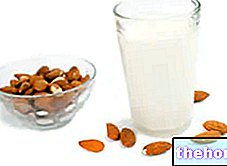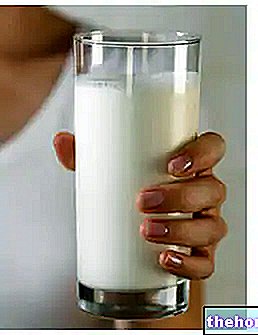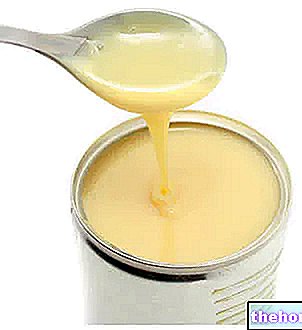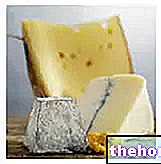
Characteristic of the Lombardy region, more precisely of the lower Milanese, of the province of Lodi and Cremona, this dairy product enjoys the recognition of Traditional Agri-food Product (PAT).
Did you know that ...
The name of pannerone derives from panéra, which in the local dialect means cream, indicating the fatness of this cheese made from whole milk.
Rich in high biological value proteins, specific vitamins and minerals, pannerone is a product that belongs to the II fundamental group of foods. However, it also has undesirable nutritional characteristics such as the richness of saturated fatty acids and cholesterol. This is why it is not relevant to all types of diet; in the next paragraphs we will better understand how to use it in the diet.
In the kitchen, pannerone is mainly used as a table cheese, as an appetizer or dish. As an ingredient it is sometimes used for first courses, especially risottos, or in cold salads. It goes quite well with delicate jams, acacia honey and Cremonese mustard. The pannerone does not have a very long conservation.
The production process of the pannerone begins with the milking of the cows and the collection of the whole milk left raw. An initial coagulation is induced at a temperature of about 30 ° C for half an hour, after which the rennet is added. The curd is left to rest and then broken. The clots collect and drain from the serum in special tissues, and are then placed in molds to complete the purging. Seasoning follows. Pannerone is distinguished from most dairy products of the same kind for: absence of salting, abundant use of rennet and high ripening temperature.
The pannerone has an average size of about 30 cm in diameter and 20 cm in height; seasoned weighs about 12 kg. Note: there are also smaller shapes, about half of the previous ones. It has a thin and smooth yellowish rind. The paste is soft white in color and with large and widespread holes. The prevailing taste of pannerone is sweet, followed by bitter notes; the salty is almost absent. Some call it "white gorgonzola", due to some similar characteristics in production and to emphasize the absence of marbling; however, the organoleptic and taste characteristics are very different.
Historically, the production of pannerone is quite ancient and dates back to the Middle Ages. After the Second World War, its consumption decreased and today it is considered marginal and limited to the cheese-making area.
with high biological value, vitamins and minerals specific to milk.It has a very high energy intake and level of fats, which increase - while decreasing water and total weight - as aging progresses. Calories are mainly supplied by fatty acids, followed by proteins and, possibly, by very few carbohydrates - only in the slightly seasoned forms. The lipid chains are mainly of the saturated type, the peptides of high biological value - provide all the essential amino acids in the right proportions and quantities compared to the human protein model - and any soluble / simple carbohydrates - lactose disaccharide.
The pannerone does not contain fibers; instead it is rich in cholesterol. By increasing the maturation, the lactose is almost completely degraded into lactic acid by the bacterial microflora. By increasing the maturation, however, the concentration of histamine increases. The amount of purines, as for other foods of the same food group, is quite low. It does not provide gluten.
The vitamin profile of pannerone is characterized by the abundance of riboflavin (vitamin B2) and retinol or equivalent (vitamin A and / or RAE). Many other water-soluble factors of group B are fairly concentrated, such as thiamine (vitamin B1) and niacin. (vit PP) As far as minerals are concerned, cheese shows significant concentrations of calcium and phosphorus, while sodium is particularly low.
against overweight - which should be low-calorie and normolipidic.
The prevalence of saturates on the total fatty acid profile and the abundance of cholesterol make pannerone unsuitable for hypercholesterolemia.
Containing high biological value proteins, pannerone can be considered an excellent source of essential amino acids. It is recommended in all circumstances that require an increase in the intake of these nutrients; indicative examples are: general and specific malnutrition, chronic malabsorption and increased specific needs, for example: during pregnancy, breastfeeding or by practicing extraordinarily intense and prolonged sports. The use of cheese as a nutritional source of high biological value proteins / amino acids essential is however limited by its less desirable properties - see cholesterol and saturated fats - which, to ensure the balance of the diet, require the use of moderate portions and a low frequency of consumption.
Lactose, in itself scarce due to the effect of lactic fermentation - greater, as we have said, in the young forms - can still be annoying for the more sensitive intolerant. A modest increase in the concentration of histamine is to be reported, especially in the more aged forms, which makes it inappropriate in the case of particularly pronounced specific intolerance. Gluten free and low in purines, it is instead relevant to the diet against celiac disease and hyperuricemia.
Given the wide range of water-soluble vitamins of group B, which mainly perform the function of cellular coenzymes, pannerone can be considered a useful food to support the metabolic processes of various tissues. Fat-soluble vitamin A and / or its equivalents abound in pannerone. (RAE), necessary to maintain intact visual function, reproduction capacity, cell differentiation, antioxidant defense, etc.
Considering the modest percentage of sodium, pannerone is one of the few cheeses allowed in the preventive and / or therapeutic diet for sodium sensitive arterial hypertension.
The richness of calcium and phosphorus is a very useful feature for guaranteeing the balance of skeletal metabolism, a very delicate process in fetal development, in the growth phase of the child and in old age - due to the tendency to osteoporosis. Notes: remember that for bone health it is necessary to ensure a correct intake of vitamin D or an adequate sun exposure.
For hygiene reasons, being based on raw milk, it is advisable to avoid pannerone during pregnancy. This is not a blue cheese, so it shouldn't have a high risk of contamination from Listeria monocytogenes; nevertheless, it is advisable to avoid it or subject it to total cooking.
Pannerone cheese is not allowed in the vegan diet. Moreover, due to the presence of animal rennet, it must also be excluded in the vegetarian and Hindu ones. It has no contraindications for the Muslim and Jewish religions. The opinions of observant Buddhists, in this regard, are conflicting.
The frequency of consumption of pannerone cheese - as a dish - is less than or equal to 1-2 times a week, with an average portion of about 80 g.
, as an appetizer or second course. It goes brilliantly with delicate jams and marmalades, acacia honey and Cremonese mustard.It is also an exceptional ingredient for first courses, especially risottos, in which it is frequently combined with fruit - such as pears - and oil seeds - such as walnuts and pine nuts.
The oenological pairing of pannerone is essentially with fragrant white wines, such as Lugana and Clastidio. Alternatively, rosé wines such as S. Colombano do not disfigure.
whole raw - unpasteurized. This is put in the boiler and brought to 30 ° C - to facilitate coagulation - and added with calf rennet; in about 30 minutes an acid-rennet curd is formed. Lactic ferments are not added and those of the natural bacterial flora are sufficient - lactobacilli and a few coliforms. The curd is then broken and crumbled. Most of the whey is eliminated using pans called "ramin", keeping the mass hot and stirring. The extraction of the curd and the first draining take place with sheets called "patta". Subsequently it is placed in "fascere" for 3-4 days, inside warm rooms to finish the purging. Removed from the containers, the forms are wrapped in special paper and tightened with wooden bands around the side. Here they remain in "stewing" to be matured and aged for 15 to 60 days. The activity of coliform bacteria leads to a certain leavening.
Note: the presence of coliform bacteria should not cause alarm; no cases of pannerone food poisoning have ever been recorded so far.




























